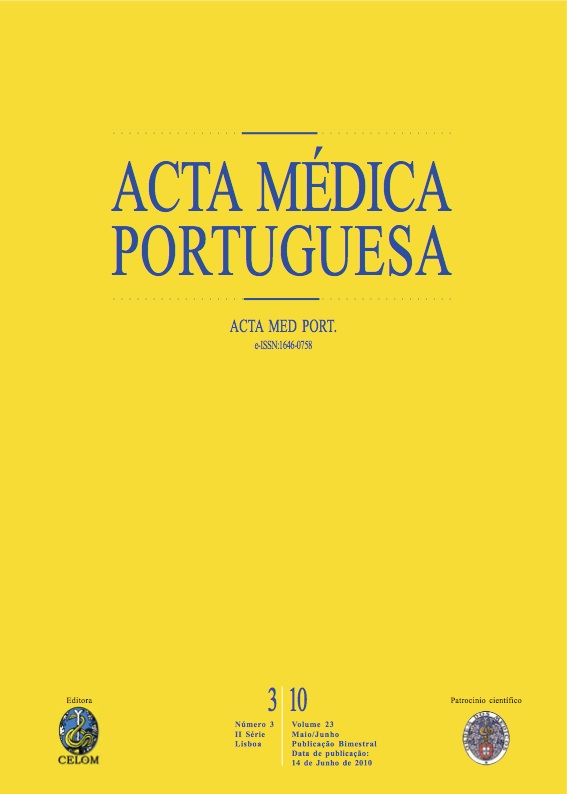Prenatal ultrasonography in the diagnosis of vein of Galen aneurysm.
DOI:
https://doi.org/10.20344/amp.627Abstract
Vein of Galen aneurysm is a rare congenital anomaly, originated from a defect in fusion of internal cerebral veins. Due to low resistance, it produces high debit cardiac insufficiency. It constitutes 1% of all intracranial vascular malformations. Prognosis depends on patient's age when the manifestation occurs and aneurysm size. The two reported cases are about fetal prenatal diagnosis of vein of Galen aneurysm, confirmed by ultrasonography, which evolved for caesarian delivery at term gestation. Magnetic resonance was carried out after birth, confirming prenatal diagnosis. The first patient had spontaneous thrombosis of the aneurysm while the second was submitted to embolization. Both of them had hospital discharge with ambulatory accompaniment. The prenatal ultrasonography diagnosis is fundamental to determine aneurysm size, defining the best treatment, when this procedure is indicated, and the more adequate obstetric and perinatal assistance.Downloads
Downloads
How to Cite
Issue
Section
License
All the articles published in the AMP are open access and comply with the requirements of funding agencies or academic institutions. The AMP is governed by the terms of the Creative Commons ‘Attribution – Non-Commercial Use - (CC-BY-NC)’ license, regarding the use by third parties.
It is the author’s responsibility to obtain approval for the reproduction of figures, tables, etc. from other publications.
Upon acceptance of an article for publication, the authors will be asked to complete the ICMJE “Copyright Liability and Copyright Sharing Statement “(http://www.actamedicaportuguesa.com/info/AMP-NormasPublicacao.pdf) and the “Declaration of Potential Conflicts of Interest” (http:// www.icmje.org/conflicts-of-interest). An e-mail will be sent to the corresponding author to acknowledge receipt of the manuscript.
After publication, the authors are authorised to make their articles available in repositories of their institutions of origin, as long as they always mention where they were published and according to the Creative Commons license.









